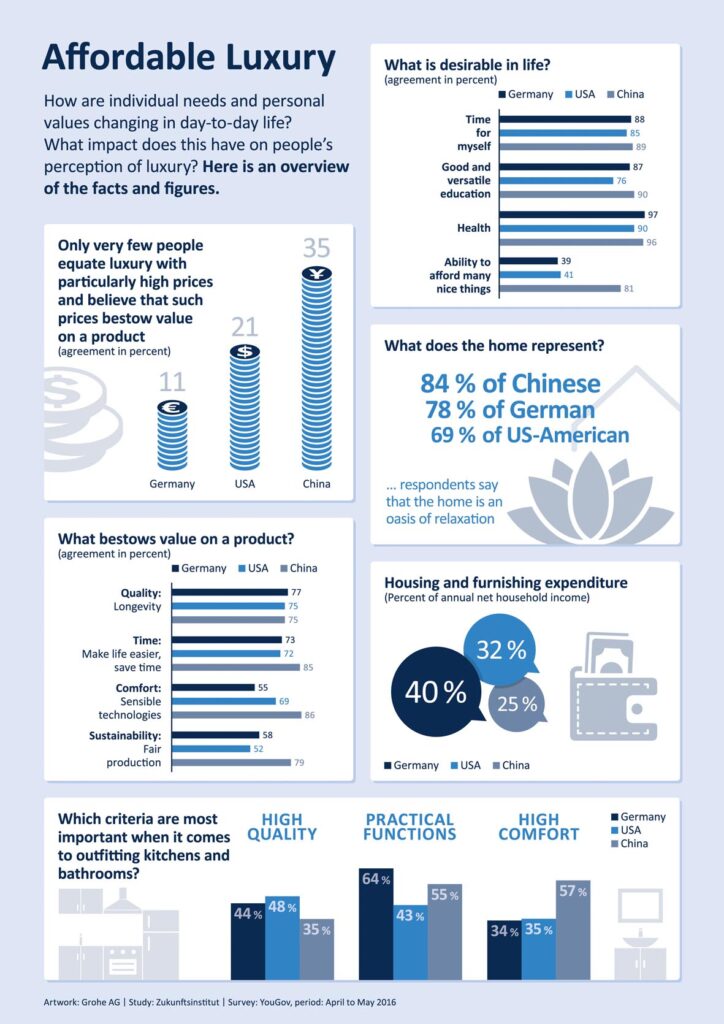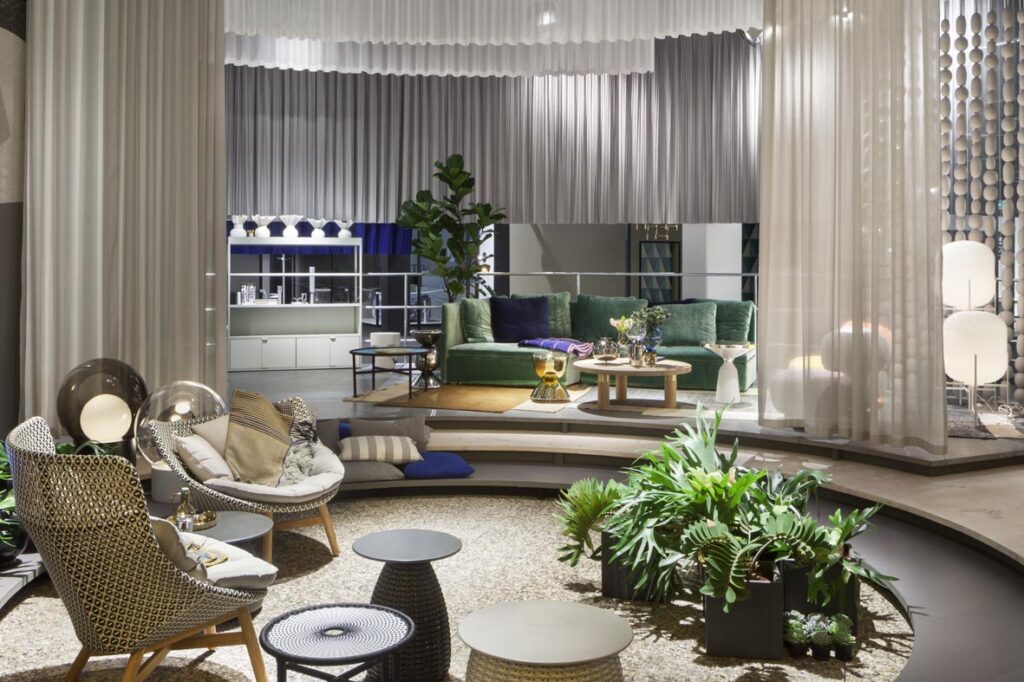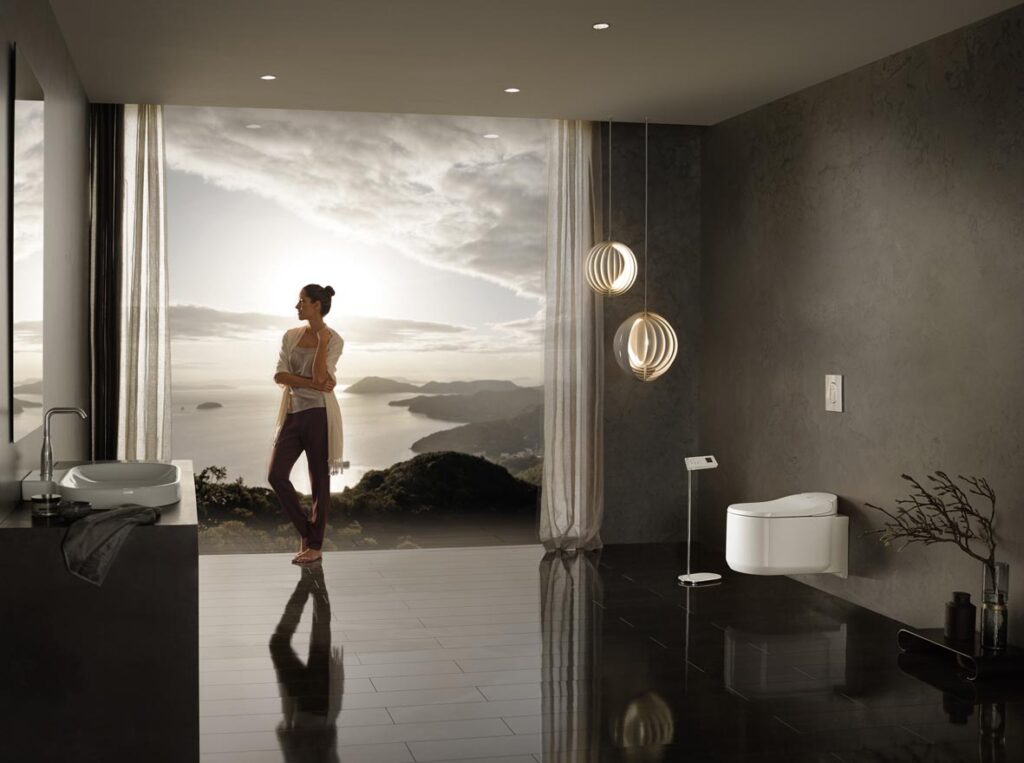According to a recent survey, the majority of Germans, Americans and Chinese all agree on one thing: price is not the critical factor in defining what is a luxury item. Nowadays, values such as individual well-being and quality of life are increasingly important. In turn, home life is particularly significant in defining luxury; it is put on a par with individual self-expression.
Luxury need not be expensive. This was the not entirely unexpected result of the “Affordable Luxury” study that was carried out by the Frankfurt-based Zukunftsinstitut (Future Institute) on behalf of the sanitary fittings company Grohe during April and May 2016. The study analysed German, American and Chinese opinions based on an online questionnaire. According to the survey, luxurious products should first and foremost stand out in terms of quality and comfort, make life easier and save time. Together with these requirements, the need for luxury to be affordable is on the increase.
 In terms of home life and furnishings, tangible and intangible expressions of luxury blend together. At the most recent edition of the international interiors show imm cologne 2016, this was illustrated by the “Das Haus” installation in the form of a circular space, bordered only by movable partitions and representing designer Sebastian Herkner’s interpretation of openness and hospitality. For the interior furnishings he combined the democratic with exclusive, handmade design.
In terms of home life and furnishings, tangible and intangible expressions of luxury blend together. At the most recent edition of the international interiors show imm cologne 2016, this was illustrated by the “Das Haus” installation in the form of a circular space, bordered only by movable partitions and representing designer Sebastian Herkner’s interpretation of openness and hospitality. For the interior furnishings he combined the democratic with exclusive, handmade design.

People across the globe appreciate a deep sense of well-being and comfort at home and look upon the living room as an oasis of calm and relaxation (Germany 78 percent, USA 69 percent, China 84 percent). It is important that the living room has a positive influence on health and well-being (Germany 78 percent, USA 60 percent, China 84 percent), because it makes an important contribution to the widespread goal in life of being healthy and fit. According to the Federal Statistical Office, German households invest 40 percent of their annual expenditure on their home life and furnishings. In the USA the number is 32 percent and in China 25 percent.
The shift in values is also demonstrated by the fact that luxury is rarely now put on an equal level with status and material wealth. Only eleven percent of Germans, 21 percent of Americans and 35 percent of Chinese agree with the statement that they perceive products to be luxurious if they cost more than average. It is much more a matter of the buyer doing something good for themselves.
 In China, the possession of money (69 percent) and the ability to afford lots of things (81 percent) still play an important role – and not without reason, because in China the traditional understanding of material wealth is quite different and the democratisation of luxury is a more recent development.
In China, the possession of money (69 percent) and the ability to afford lots of things (81 percent) still play an important role – and not without reason, because in China the traditional understanding of material wealth is quite different and the democratisation of luxury is a more recent development.
The study proves not only that the development of a stronger personal identity is considered more important than external appearance, but also that luxury is being viewed less and less as something exclusive. Even demanding customers are of the opinion that luxury can also be had at an inexpensive price. The causes of the democratisation of luxury are, above all, technological progress, a general increase in prosperity, globalisation and easy access to typical luxury offerings on the internet.
Article and images courtesy IMM Cologne. For more information visit http://www.imm-cologne.com/









































